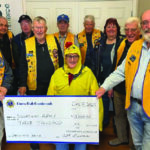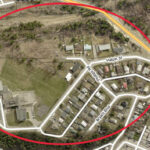Home »

Our night sky’s fastest and stormiest meteors
By Dan Hicks
The 2023 Leonid Meteor Shower peak is tonight, November 17 (Friday) at 10 p.m. MST.
Shower Active: Nov 3 to Dec 2. Radiant: Constellation Leo – the lion. Leo will rise over the Rockies November 18 (Saturday) at 1 a.m. MST.
The radiant is the apparent originating point of meteor shower meteors in the night sky.
ZHR (Zenithal Hourly Rate) – typically: 15 Leonids per hour can be expected when their radiant is at our zenith. Speed: 70 kilometers per second – Leonids are our fastest meteors (the slower Perseids travel at a mere 59 km per sec). Parent object: Comet 55P/Tempel-Tuttle, orbital period 33 years; last visit 1998 (binoc comet); next visit 2031. Leonid Meteor Shower storms: 1833, 1866, 1966, 1999, & 2001. Meteor storm = 1,000 meteors & more per hour.
Chances of a Leonid Meteor storm occurring this November of 2023 – poor (yet possible).
Earthsky.org Leonid meteor shower: All you need to know in 2023 Re times – avoid confusing UT with our MST.
American Meteor Society – Class 1 Major Meteor Shower table (4 classes, Class 1 showers – 9) amsmeteors.org
The Leonid Meteoroid cloud – consisting of multiple dust debris remnants from parental Comet 55P/Tempel-Tuttle. Tempel-Tuttle’s orbit extends from Earth (3rd inner circle) to Uranus (3rd outer circle of 4); comet diameter is 3.6 km.
Behold a grand interactive perspective of this Leonid Meteoroid cloud online: https://www.meteorshowers.org
From the southern boundary of Prince George (BC), on the clear cool night of November 17th, 2001, I witnessed the sky above me come alive with falling stars in the historic Leonid Meteor Storm of that date.
Does our East Kootenay Sky of November 17, hold any promise of a Leonid Meteor storm spectacle? beyond Cranbrook’s dismal light-polluted skies – hope ever lyeth with those who yet dwelleth out beneath nature’s bountiful stars.
The Leonid Meteoroid cloud – consisting of multiple dust debris remnants from parental Comet 55P/Tempel-Tuttle. Tempel-Tuttle’s orbit extends from Earth (3rd inner circle) to Uranus (3rd outer circle of 4); comet diameter is 3.6 km.
Lead image: A Leonid Meteor fireball flashes across the lower half of the Orion Constellation during the Leonid Meteor Storm of November 17, 2001 over Oregon. A meteor piece has detached and created a fainter parallel meteor train. Kris Asla image/images submitted








